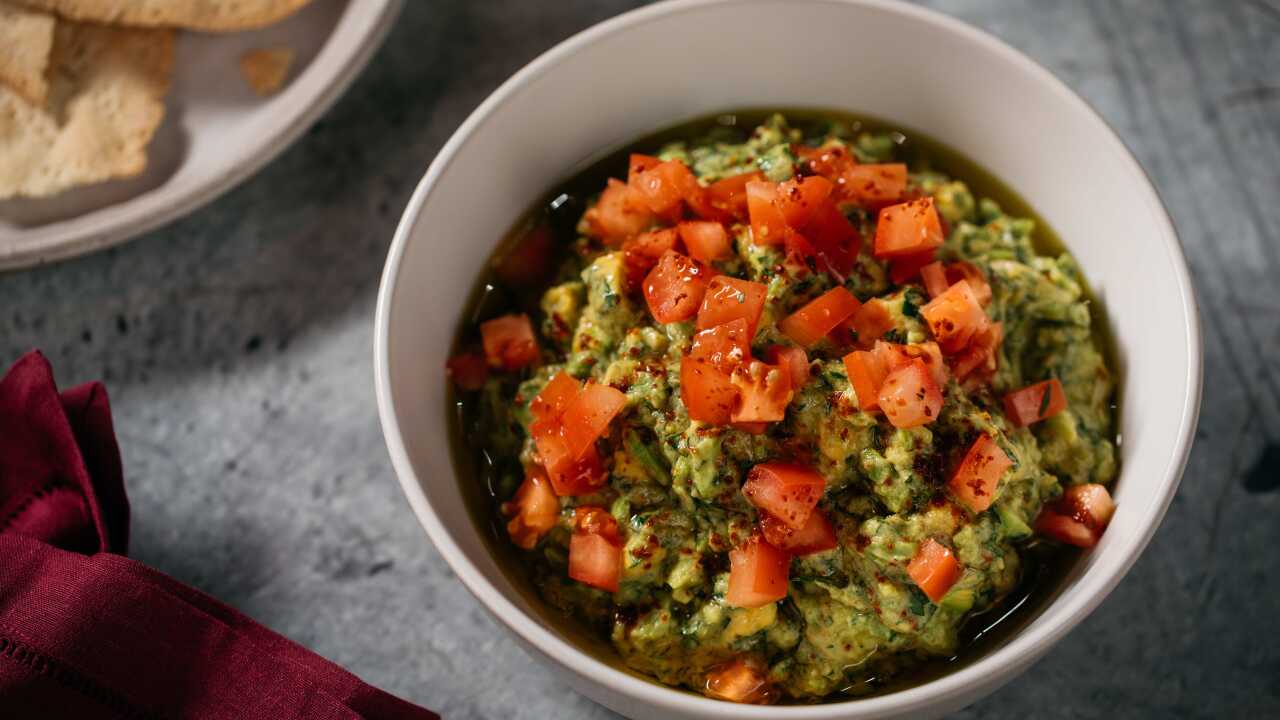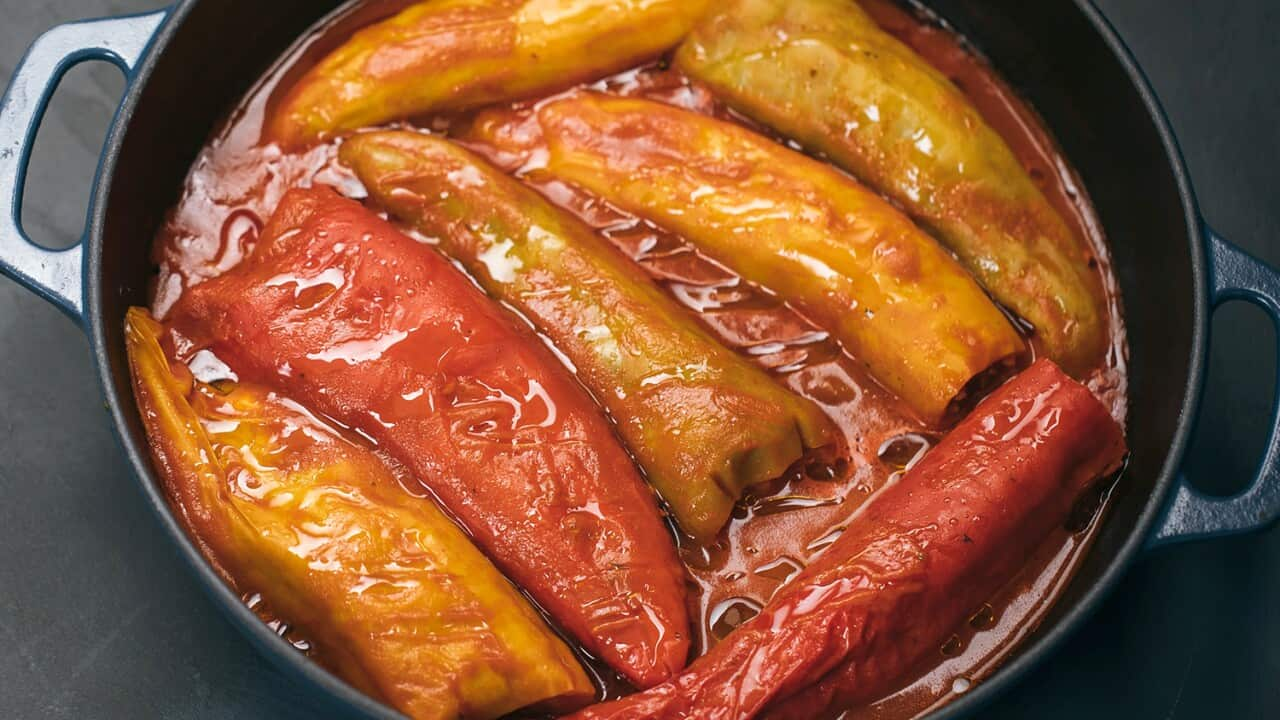“There’s a chemistry to Egyptian cuisine,” says chef Mina Makram, who was born in Alexandria, in the country's north. “Every dish has a base of salt, pepper, cumin and coriander, but it’s about knowing exactly when and what sequence to add them.”
The chef is proud to share this flavour equation and the history of ancient and modern Egyptian cuisine at Sydney’s . Makram opened the restaurant in November 2020, four years after moving to Australia (and four days before the birth of his first child, Raphael).
From the falafel to the feteer and , he makes everything in-house using generations-old recipes passed on from his mother. Makram’s favourite is the slow-cooked tiger prawns prepared in an Alexandrian marinade of coriander, cumin, onion, tomato, green chilli and garlic. It's traditionally served with tahini and .
Most Fridays, when he was growing up in Alexandria, he'd cook a fresh seafood lunch with his dad, using fish they caught from the Mediterranean Sea or prawns bought from their local sea monger.
“If there was no fish or it wasn’t the season of fish, we ate or liver or koshari and liver together,” he says.

Koshari is beloved in Egypt. Source: Cairo Gourmet Kitchen
“Every day after school, my friends and I would eat koshari out of a plastic bag on the street,” Makram recalls.
Diners are encouraged to pair koshari with : a stir-fried calf liver marinated with Egyptian spices.
“In Cairo, they cook it with salt and pepper only," he says, "whereas, in Alexandria, they marinate it with cumin, coriander powder, garlic and chilli, pan-fry it and then add vinegar and lemon juice.”
Most of the herbs and spices in the dishes come from Egypt. The broad beans in Makram’s falafel are from the same place, too.
“The Lebanese falafel base is chickpeas and it's not that soft, but Egyptian falafel is crispy on the outside and fluffy and green on the inside,” he explains. “In May, I closed the restaurant for 24 days and went back to Egypt. I trained for two days in a falafel shop learning how to make authentic Egyptian falafel and discovered the recipe uses 15 different spices.”
“In May, I closed the restaurant for 24 days and went back to Egypt. I trained for two days in a falafel shop learning how to make authentic Egyptian falafel and discovered the recipe uses 15 different spices.”

The Egyptian falafel at Cairo Gourmet Kitchen. Source: Cairo Gourmet Kitchen
He brought these spices home from Egypt and uses them to make fresh falafel daily.
Cairo Gourmet Kitchen’s Greek-inspired dips, such as tzatziki, reflect his birthplace: in the early 20th century, Greeks formed in Alexandria and their recipes were integrated into Egyptian cuisine (the Greek influence on Alexandria actually goes back two thousand years, when the city was ).
I trained for two days in a falafel shop learning how to make authentic Egyptian falafel and discovered the recipe uses 15 different spices.
With his dips and sauces, Makram takes no shortcuts and prepares them all from scratch, exactly “how they make it at home”.
The highlight on the dessert menu is um ali: a bread pudding made with layers of puff pastry that’s soaked in milk and mixed with nuts, coconut flakes, sultanas and pistachios. Makram bakes it fresh to order and recommends having it with a traditional Egyptian coffee to help digest the meal.
“From day one, I set out to do authentic Egyptian food,” he says. “But I'm not selling food, I'm selling the experience. Here, you will eat what I'm eating, what my mum cooks for me, what every mum in Egypt cooks for her family.”
Tue – Sat 5:30 pm – 11 pm
Egyptian eats

Green ful medames












